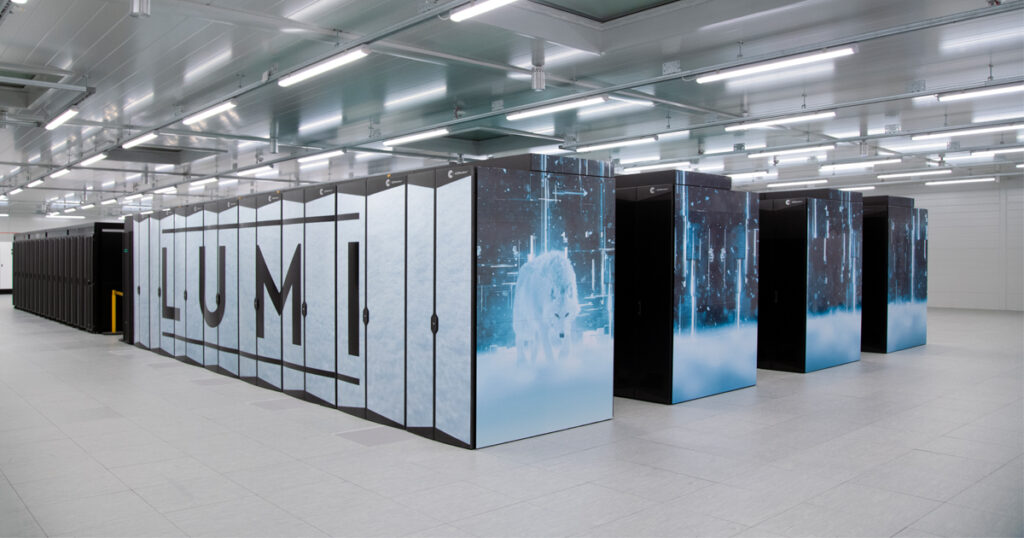Written by
Jerônimo do Valle
Today, June 13th, "LUMI", the first pre-exascale system from EuroHPC Joint Undertaking, based on HPE's Cray EX hardware architecture, has just gone live. The project is installed in the data center of the IT Center for Science (CSC) in Kajaani, Finland.
Owned by the EU's EuroHPC Joint Undertaking (JU), half of the total €202 million ($210 million) budget for the device comes from the EU, with a quarter coming from Finland and the rest from members of a consortium that includes Belgium, Czech Republic, Denmark, Estonia, Finland, Iceland, Norway, Poland, Sweden and Switzerland.
The system (built by the American Hewlett-Packard) is intended to serve as a platform for international cooperation in research and for the development of artificial intelligence and quantum technology, according to the CSC. It is also expected to be used for the usual combination of scientific projects, such as high-precision climate simulations, nuclear reactors simulations and medical research, however 20% of its capacity must be available for industrial research and development activities, including small and medium-sized ones. companies (SMEs).
"LUMI will help solve societal challenges", said CSC Managing Director Kimmo Koski, "including climate, life sciences, medicine and, of course, many others". He added that the system will be used for applications involving high-performance computing (HPC), AI and data analytics, but also "where these meet and merge", which has been a common thread between HPC projects in recent years.
As of May 30, LUMI is already ranked third on the current Top500 list of the world's fastest supercomputers, achieving a Linpack High Performance (HPL) rating of 151.9 petaflops in benchmarks that were released at the recent ISC22 conference in Hamburg. However, not all cases have been filled, with the LUMI GPU partition not yet fully installed, after which its performance should grow to around 375 petaflops, with a peak performance potentially exceeding 550 petaflops. A second pilot phase for select users is scheduled to begin in August, with the full system expected to be available to users by the end of September.
An important fact to note is that LUMI also has "green credentials", as it is entirely run from hydroelectric power, while the waste heat generated by the system contributes to heating nearby houses in the Kajaani area.
The Finnish Permanent Secretary for Education and Culture, Anita Lehikoinen, said that LUMI would be extremely beneficial for the volume of scientific research being carried out in the country. "It is important that Finland is seen as an attractive destination for science and research," she said, adding that the country plans to increase spending on research and innovation to 4% of GDP by 2030, calling it "an investment worth the pity".

